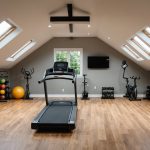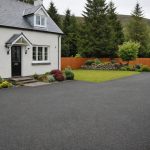Understanding Coastal Weather Challenges
Navigating coastal weather conditions is crucial when considering skylight installation in the UK. Coastal regions typically experience unique weather patterns characterized by high winds, salinity, and frequent rainfall. This combination poses specific challenges not only to the structure of homes but particularly to the installation and maintenance of skylights.
The persistent rainfall in these areas can impact the durability and functionality of skylights. Moisture seeping through improperly sealed skylights could lead to leaks and interior water damage. Ensuring that skylights are properly sealed and installed is imperative to prevent any potential hazards. Over time, constant exposure to rain can also compromise the materials used, necessitating the use of highly durable materials and regular inspections.
Cela peut vous intéresser : Essential Guidelines for Creating an Eco-Friendly Green Roof on Inner-City Office Buildings in the UK
During skylight installation, unexpected weather-related issues such as high winds or sudden storms can arise. These can delay installation and affect the overall quality if not managed properly. Before beginning any projects, it’s vital to anticipate these challenges and plan accordingly.
To mitigate these issues, choosing skylights specifically designed for coastal weather resilience and ensuring installation is performed by experienced professionals can make a significant difference. Awareness of these coastal weather factors allows for better preparation, resulting in a more durable and efficient skylight installation.
A lire en complément : Essential Factors to Consider When Installing a Vertical Garden on Your UK Terrace Home
Materials Best Suited for Rain-Prone Areas
When it comes to installing skylights in rain-prone areas, the choice of materials is crucial to ensure durability and enhance performance. Weather-resistant materials are specifically designed to withstand harsh conditions, such as excess moisture and coastal corrosion. These materials are engineered to provide long-lasting protection against environmental factors, making them ideal for skylight construction.
Several glazing options are available, each varying in terms of durability. Commonly used materials include polycarbonate, tempered glass, and laminated glass. Polycarbonate is known for its exceptional durability and impact resistance, making it a popular choice for skylights exposed to heavy rain and strong winds. Tempered glass, on the other hand, offers superior resistance against thermal stress and sudden temperature changes, maintaining its integrity over time.
In coastal regions, where corrosion is a significant concern, selecting skylights made from weather-resistant materials is particularly important. Materials such as anodized aluminum or stainless steel are recommended due to their excellent corrosion resistance. These materials help to prevent rust and degradation, ensuring the skylight remains intact despite harsh conditions.
Investing in the right materials not only enhances the functional aspects of a skylight but also adds value to a property by ensuring longevity and peace of mind.
Sealing and Waterproofing Techniques
Sealing and waterproofing your skylights is crucial when dealing with wet environments. Achieving a leak-free setup begins with the correct choice of materials and methods. The best practices for sealing involve applying multiple layers of waterproofing agents that cater to both resilience and flexibility. For optimal results, using sealants specifically designed for wet environments such as silicone-based or polyurethane sealants ensures superior protection. These materials provide excellent adhesion and elasticity, crucial attributes when handling temperature fluctuations and moisture.
The importance of proper installation methods cannot be overstated. Accurate installation processes are essential to preventing future leaks and extending the lifespan of skylights. A key technique involves ensuring that the waterproofing layers overlap adequately, creating a continuous barrier that diverts water away from potential entry points.
When considering the selection of materials, it is essential to prioritise those known for their durability and resistance to UV rays. High-quality flashing and membranes, which include a bitumen base or PVC, can significantly enhance the structure’s waterproofing capability by offering robust protection.
By employing these sealing techniques and following best practices meticulously, the risk of leaks can be minimized, ensuring your skylights remain a reliable feature of your structure for years to come.
Ventilation Considerations for Skylights
Proper ventilation is crucial when integrating skylights into a building, as it ensures effective air circulation and maintains indoor air quality. Skylight designs should specifically address how humidity control will be managed, especially in regions with coastal climates where moisture levels can be elevated. Improper management of humidity can lead to condensation issues and potential damage to interiors.
To tackle such challenges, several strategies can be implemented. Adjustable vents or window designs allow for the regulation of air circulation, helping to balance indoor and outdoor air exchange. This prevents the buildup of humidity and maintains a healthy indoor environment.
For those wanting to enhance energy efficiency, installing automated ventilation systems is a beneficial approach. These systems can be programmed to open or close based on indoor climate conditions, reducing the need for manual intervention and thereby optimizing energy use. They also ensure that air circulation remains consistent, which is especially effective in mitigating the intense humidity often experienced in coastal climates.
In conclusion, the integration of thoughtful ventilation solutions can significantly enhance the functionality and benefits of skylights, ensuring a comfortable and energy-efficient home environment.
Compliance with Local Building Regulations
Installing skylights in the UK involves adhering to specific building regulations to ensure safety and functionality. These regulations focus on aspects like structural stability, thermal efficiency, and adequate ventilation. Understanding these rules is crucial during the installation process to prevent any future complications.
Obtaining necessary permits is a vital aspect before beginning any skylight project. Permits ensure that your installation meets all local construction standards and avoids legal issues. Without the appropriate permits, you may face substantial fines or be asked to remove the skylight altogether.
Another significant consideration is understanding installation standards that address weather resistance. Skylights need to be properly sealed and insulated to prevent leaks and energy loss, particularly in a climate as variable as the UK’s. Compliance with these installation standards also involves selecting materials and designs that can withstand local weather conditions, which is essential for long-term maintenance and performance.
Before commencing any installation, it is advisable to consult with local authorities to gather detailed information about local codes and procedures. This proactive approach not only ensures compliance but also contributes to a smooth and efficient installation process, safeguarding your investment and enhancing your property’s value.
Maintenance Tips for Longevity
Routine skylight maintenance is crucial to ensure optimal performance and prevent long-term issues. Regular inspections are the backbone of this process. Conduct monthly checks to examine the skylight for any signs of leaks, condensation, or physical damage, such as cracks. This practice can signal early potential issues before they escalate.
When it comes to cleaning, focus on clearing debris, like leaves or twigs, and removing any dirt buildup on the skylight’s surface. Use water and a mild non-abrasive cleaner to gently wipe the glass. Avoid using harsh chemicals as they can damage the materials.
Signs to watch for include visible weathering or wear around the edges, which might indicate that sealant or flashing replacement is needed. Moisture trapped between glass panes can suggest compromised seals, demanding immediate attention.
For those with homes in coastal areas, extra care during maintenance is advisable due to high salinity and weather variations. Inspect the skylights closely, especially after harsh weather conditions, and apply protective coatings if necessary to combat salt exposure.
By maintaining a regular schedule for skylight maintenance, conducting thorough inspections, and practising proper cleaning techniques, you can significantly prolong your skylight’s longevity and efficiency.
Professional Installation vs. DIY
When installing a skylight, the choice between professional installation and a DIY skylight project can be pivotal. Hiring professionals often guarantees a level of expertise and experience that ensures seamless installation. They are well-versed with local building codes and can potentially avoid costly mistakes. However, this convenience comes with higher installation costs. These costs can be significantly higher in coastal regions due to factors like specialized equipment needed to handle adverse weather conditions and the necessity to use weather-resistant materials.
On the other hand, a DIY skylight approach can be enticing to those who enjoy hands-on tasks and wish to save money. However, it is crucial to evaluate your own skill level and whether you have the appropriate tools. Without the right experience, mistakes can lead to structural damage or leaks, ultimately incurring more expenses than the initial savings.
When considering costs, remember that hidden expenses such as repairs or energy inefficiency due to improper installation can add up. Therefore, understanding both the advantages and disadvantages of each approach is essential. For some, investing in a professional service may outweigh the risks and nuances of a DIY skylight, especially in regions with challenging climates.
Energy Efficiency Implications
The integration of skylights in homes offers notable energy efficiency advantages. While they introduce natural light, they can, if properly selected and installed, reduce reliance on artificial lighting and lessen electricity usage. To maximize these skylight benefits, it’s crucial to choose energy-efficient options. Double or triple-glazed skylights are excellent choices, reducing heat transfer due to their enhanced insulation properties.
When considering insulation around skylights, focus on models with thermal breaks or low-emissivity (Low-E) coatings. These features prevent heat loss in colder months and reduce heat gain during warmer periods. Employing a proper insulation strategy can significantly increase the energy efficiency of your home.
Here are some tips for selecting energy-efficient skylights:
- Opt for skylights with a low U-factor, indicating higher insulation performance.
- Look for the Energy Star label to ensure compliance with energy efficiency standards.
- Choose skylights with a Solar Heat Gain Coefficient (SHGC) appropriate for your region’s climate.
Addressing insulation around skylight installation areas can yield long-term energy savings. Skylight benefits extend to reducing heating and cooling demands, influenced by proper insulation, offering a sustainable approach to home energy management.
Case Studies and Real-Life Examples
Exploring case studies of skylight installations in UK coastal areas offers invaluable insights. One standout example is a homeowner in Cornwall who opted for skylights tailored to resist the harsh coastal conditions. These skylights featured special coatings to combat saline air and corrosion, ensuring durability.
Another installation experience involved a family in Brighton, who faced unique challenges due to the area’s notorious winds. Their solution was to use a reinforced glass design, which not only improved safety but also maintained energy efficiency despite the turbulent conditions.
Learning from these experiences, several key lessons have emerged. Installations must consider local weather patterns, especially in coastal areas where high winds and salty air are common. This understanding informs the choice of materials and design, ensuring skylights perform optimally and require minimal maintenance.
Insights from homeowners frequently highlight the importance of regular upkeep. One common suggestion is to schedule periodic inspections to prevent minor issues from escalating. Homeowners noted that routine cleaning and checking seals can extend the lifespan of the skylights significantly. These real-life experiences underscore the importance of thoughtful planning and maintenance practices to ensure skylights remain a reliable feature in coastal properties.






